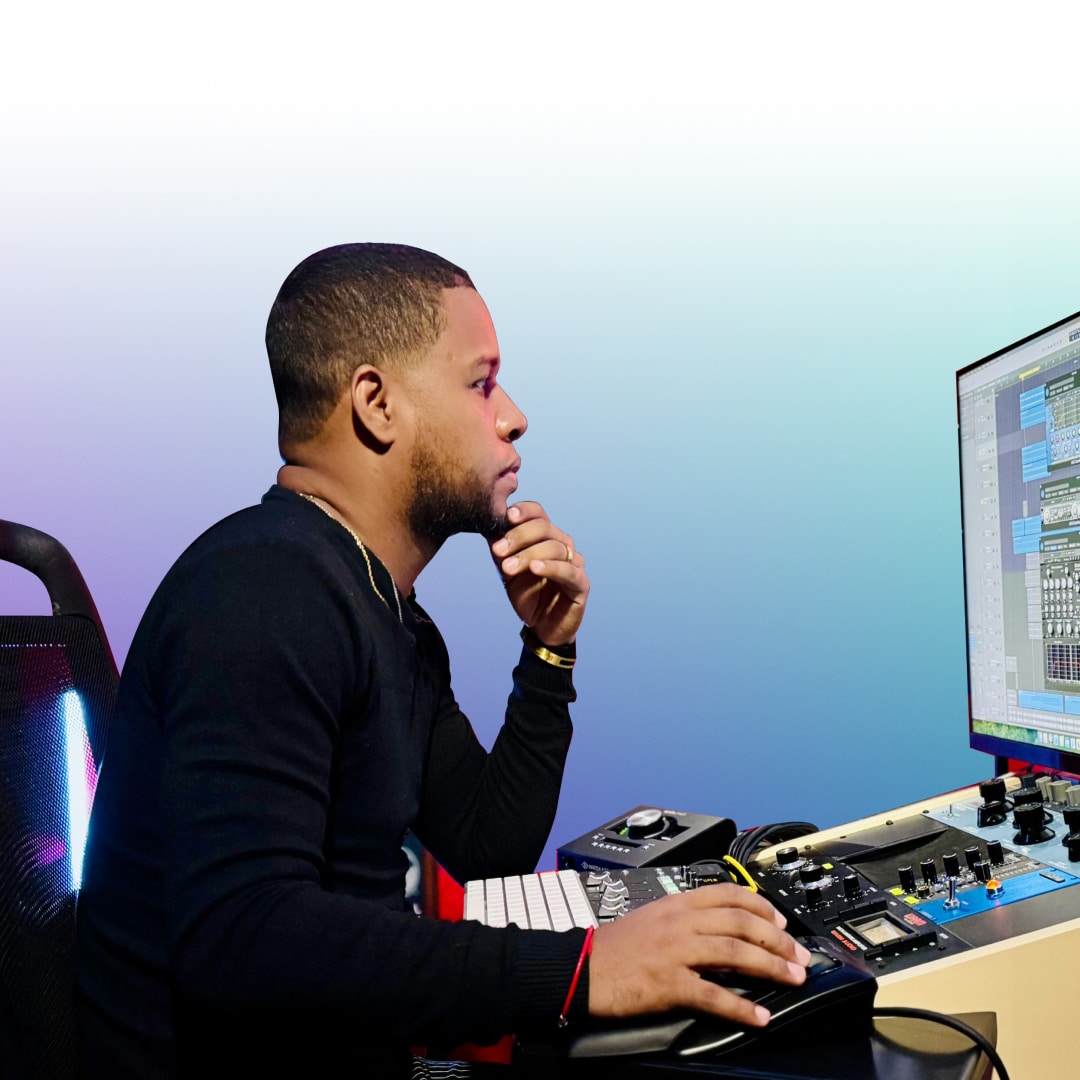In today’s music industry, digital distribution is crucial for artists aiming to reach a global audience. The ease of access to streaming platforms and online stores allows musicians to share their work with millions of potential listeners worldwide. Digital distribution eliminates the geographical limitations that once restricted artists to local markets. By leveraging digital platforms, artists can grow their fan base, generate revenue, and gain valuable exposure. The right strategy and tools can make digital distribution a seamless and effective process.
The Role of Music Publishers and Publishing Companies
Managing Rights and Royalties
Music publishers and music publishing companies play a vital role in managing an artist’s rights and royalties. These entities ensure that artists receive proper compensation for their work, navigating the complex landscape of music rights. By handling the administrative tasks related to rights management, publishers free up artists to focus on their creativity. Effective rights management is essential for an artist’s financial stability and career growth.
Distribution Logistics
The logistics of music distribution can be daunting for independent artists. Independent music publishers and record publishers offer valuable assistance in navigating these challenges. They handle the technical aspects of distribution, ensuring that your music is available on all major platforms. This includes converting files to the appropriate formats, uploading tracks, and managing metadata. By partnering with reputable organizations, artists can streamline the distribution process and avoid common pitfalls.
Benefits of Working with Reputable Organizations
Collaborating with the best independent music publishers provides numerous benefits for artists. These organizations offer extensive industry knowledge, established networks, and reliable support systems. Working with well-known publishers can enhance an artist’s credibility and open doors to new opportunities.
Music Licensing Organizations
Legal Protection
Music licensing organizations are essential for providing legal protection to artists. They ensure your rights are safeguarded and you receive fair compensation for the use of your music. These organizations manage royalties from various sources, offering comprehensive protection and support.
- Streaming Services: They manage the collection and distribution of royalties from streaming services such as publishing on Spotify, Apple Music, and YouTube. As streaming has become the dominant mode of music consumption, these organizations play a crucial role in ensuring artists receive fair compensation. They monitor streams, negotiate licensing agreements, and collect payments from these platforms. This process ensures that artists benefit financially from every stream of their work, providing a steady income stream and allowing them to focus on their creative endeavors without worrying about financial exploitation.
- Radio Stations: Royalties from radio stations are another critical revenue source managed by licensing organizations. These organizations track radio airplay, ensuring that artists are compensated for the broadcast of their music. They work with a vast network of radio stations, both terrestrial and digital, to collect data on how often songs are played. This information is then used to distribute royalties accurately. By handling these complex logistics, licensing organizations help artists receive due payments, maintaining the economic viability of their music careers and supporting their ongoing creative output.
- Public Performances: Public performances, including live concerts, background music in venues, and other public spaces, generate significant royalties for artists. Music licensing organizations ensure that royalties from these performances are collected and distributed fairly. They issue licenses to venues and event organizers, track performances, and manage the subsequent royalty payments. This system allows artists to earn from live performances and public usage of their music, ensuring their creative work is respected and remunerated. Such support enables artists to thrive in live performance settings, contributing to a sustainable and dynamic music career.
By registering with these organizations, artists can benefit from robust legal protection, ensuring their intellectual property is safeguarded, and they receive fair compensation. Licensing organizations play a vital role in this process, offering essential services that protect artists from exploitation and secure their financial interests.
Key Organizations to Consider
Organizations like ASCAP (American Society of Composers, Authors, and Publishers), BMI (Broadcast Music, Inc.), and SESAC (Society of European Stage Authors and Composers) play crucial roles in the United States music industry, particularly in supporting artists. These entities serve as performance rights organizations (PROs), ensuring that artists receive fair compensation for the public performance of their works. Each organization offers a unique set of benefits designed to support artists in various aspects of their careers. ASCAP, for example, is a membership association of more than 850,000 songwriters, composers, and music publication companies. BMI, on the other hand, operates as a non-profit organization that represents more than 1.2 million songwriters, composers, and music publishers, offering similar support structures while also emphasizing educational opportunities through programs and scholarships.
Choosing the Best Way to Publish Music
Factors to Consider
When selecting the best way to publish music, it’s essential to consider several critical factors to ensure success and sustainability. Each of these elements plays a significant role in determining the most suitable platform for your needs:
- Pricing: Different services offer various fee structures, including upfront costs, subscription models, and commission-based pricing. It’s important to evaluate these costs in your budget and projected revenue. Low-cost options might seem attractive initially, but they may come with limitations that could impact your long-term goals. Higher-priced services might offer more comprehensive features and better overall value. Conducting a thorough comparison of pricing structures helps ensure you get the best value for your investment and avoid unexpected expenses that could strain your financial resources.
- Customer Support: Responsive and knowledgeable support can significantly enhance your publishing experience by providing timely assistance with any issues or questions. Look for platforms that offer multiple support channels, such as live chat, email, and phone support, and check for reviews or testimonials about their support quality. Good customer support can help you navigate technical difficulties, understand platform features, and maximize your music’s potential. Investing in a platform with excellent customer support ensures that you have reliable help when you need it, allowing you to focus more on your creative work.
- Promotional Tools: Platforms that offer robust promotional features, such as social media integration, analytics, and advertising options, can help you effectively market your music. These tools can increase visibility, track listener engagement, and provide insights into your audience’s preferences. Look for platforms that offer customizable marketing campaigns, playlist placements, and collaboration opportunities to enhance your promotional efforts. Utilizing a platform with comprehensive promotional tools helps you build a strong presence in the music industry and ensures your work reaches its full potential.
Balancing these factors will help you find the most suitable publishing option. By considering pricing, customer support, and promotional tools, you can make an informed decision and maximize your music’s reach and impact. Careful evaluation of each aspect ensures you choose a platform that supports your journey in the music industry.
Practical Advice on Making the Right Choice
Start by identifying your goals and the resources available to you. Look for companies with a proven track record of success and positive reviews from other artists. Consider the ease of use of their platforms and the additional services they offer, such as promotional tools and analytics. Taking the time to evaluate your options will ensure that you choose a partner that aligns with your vision and supports your career growth.
Utilizing Music Publisher Software
Simplifying the Publishing Process
Music publisher software is a valuable tool that simplifies the complex process of music publishing. These software solutions streamline tasks such as metadata management, rights administration, and royalty tracking. By automating these processes, artists can save time and reduce the risk of errors. Software solutions often come with user-friendly interfaces and support, making them accessible even to those with limited technical skills.
Managing Music Efficiently
These tools help track where and how your music is being used, ensuring that you receive proper compensation. They also facilitate easy updates and revisions to your catalog as needed. By keeping your music organized and accessible, you can respond quickly to new opportunities and maintain control over your work.
How to Publish Music on All Platforms
Steps Involved
To publish music on all platforms, artists need to follow a series of structured steps. To ensure a smooth and successful publishing process, it’s essential to follow a structured approach. Here are the detailed steps you need to take:
- Prepare Music Files: Start by ensuring your music files meet the technical requirements of various platforms. This includes having the correct file format (typically WAV or MP3), appropriate bit rate, and mastering your tracks to ensure they sound professional across all devices. Organize your files with clear and consistent naming conventions to avoid any confusion during the upload process. Preparing your music files meticulously can prevent delays and technical issues during distribution.
- Choose a Distribution Service: Selecting the right distribution service is a critical decision. Look for a service that offers a wide reach, meaning it distributes to all major streaming platforms like Spotify, Apple Music, and Amazon Music. As emphasized before, evaluate the cost, payment structures, and additional features they provide, such as promotional tools or analytics, to make an informed choice.
- Submit Your Music: Once you have chosen a distribution service, the next step is to submit your music. This process typically involves uploading your audio files, along with accurate metadata. Metadata includes essential information such as the song title, artist name, genre, and release date. Don’t forget to include high-quality album art that meets the specifications of the platforms. Accurate metadata and appealing album art can enhance the discoverability and professionalism of your release, making it more appealing to listeners.
- Monitor the Submission Process: After submitting your music, it’s important to keep track of the submission process. Most distribution services provide a dashboard where you can monitor the status of your release. Check for any errors or issues that might arise and address them promptly. Ensure that your music goes live on all intended platforms by the release date. Monitoring the submission process diligently can help you catch and resolve any problems early, ensuring a smooth release.
This structured approach not only streamlines the process but also enhances the overall quality and professionalism of your release. Taking the time to prepare, choose the right service, submit accurately, and monitor the process will ultimately lead to a more effective and impactful Amazon music publishing experience.
Leveraging Social Media
Platforms like Instagram, Twitter, and TikTok offer unique opportunities to share your music, engage with listeners, and build a loyal following. Regularly posting updates and interactive posts can keep your audience engaged. Social media also allows for targeted advertising, helping you reach new potential fans.
Email Marketing
Building an email list allows you to send personalized updates, exclusive content, and announcements directly to your audience. Email campaigns can drive traffic to your streaming platforms, increase sales, and foster a sense of community among your fans. By consistently providing value through your emails, you can strengthen your relationship with your audience and keep them informed about your latest releases and events. It is also a cost-effective and efficient way to promote your music.
Collaborations for Increased Visibility
Partnering with musicians in a similar genre or with complementary styles can introduce your music to new audiences. It can take various forms, including joint tracks, live performances, and social media shoutouts. Influencer partnerships, where influencers share your music with their followers, can also be highly effective. These collaborations not only expand your reach but also add credibility and excitement to your releases.
Comprehensive Release Strategy
Scheduling Releases
A well-planned release schedule is crucial for maintaining momentum and maximizing the impact of your music. By strategically timing your releases, you can create anticipation and sustain interest in your music. Consider factors such as seasonal trends, industry events, and your audience’s listening habits when planning your release dates. A consistent release schedule can help you build a dedicated fan base and keep your audience engaged.
Creating Promotional Materials
Creating high-quality promotional materials is essential for a successful music release. This includes engaging visuals, such as cover art, music videos, and social media graphics, as well as compelling written content like press releases and artist bios. Effective promotional materials capture attention and convey the essence of your music, helping to attract new listeners. Investing time and resources into creating professional-quality materials can significantly enhance your promotional efforts. These materials should be consistent with your brand and designed to resonate with your target audience.
Engaging with Fans
Regular interaction helps to build a loyal fan base and creates a sense of community around your music. Responding to comments, hosting live Q&A sessions, and sharing behind-the-scenes content are effective ways to connect with your audience. Personal engagement shows that you value your fans, encouraging them to support your music actively.
Navigating the music industry in the digital age requires a strategic and multifaceted approach. Digital distribution has revolutionized how artists share their music, breaking down geographical barriers and opening up a world of opportunities. By leveraging the expertise of music publishers and licensing organizations, artists can ensure their rights are protected and they receive fair compensation for their work. Utilizing advanced tools and software can simplify the complexities of publishing and distribution, making the process more efficient. As artists plan their releases, they should consider the importance of promotional efforts, including social media engagement, email marketing, and strategic collaborations. Ultimately, a comprehensive and well-executed strategy that balances creative output with effective distribution and promotion can lead to sustained success and growth in the music industry.













